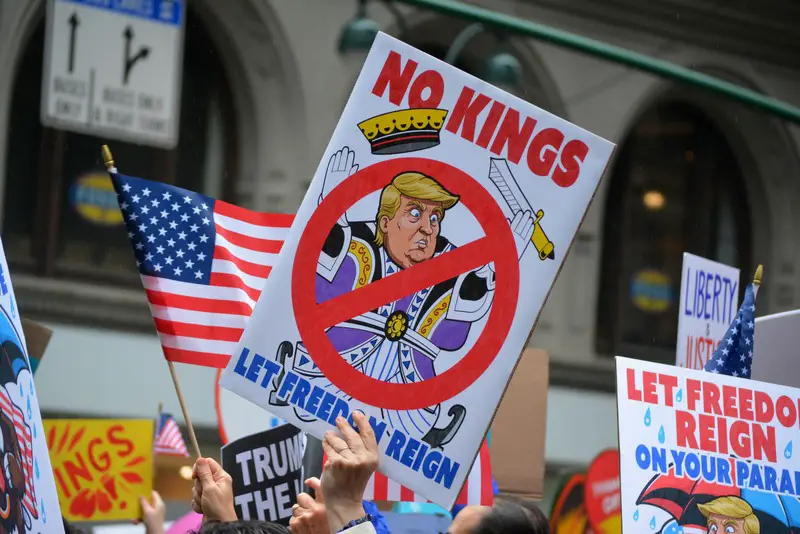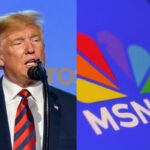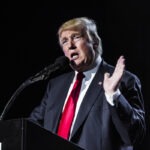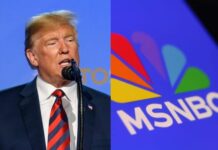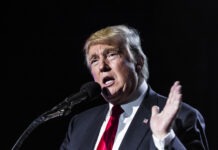After millions of Americans took to the streets on Saturday, October 18, 2025, for the second nationwide “No Kings” protest against the Trump administration, Donald Trump Jr. defended his father against accusations that the president harbors monarchical ambitions. In a Fox News interview that aired on October 21, Trump Jr. pushed back against the characterization that has fueled growing opposition movements across the country.
The younger Trump insisted during the interview with Sean Hannity that his father’s actions do not reflect authoritarian tendencies. “If he was a king, he probably would have never left the office the first time,” he stated, referring to the president’s departure from the White House after his first term. The comments came as protest organizers prepared for what would become one of the largest demonstrations in American history, with nearly seven million people ultimately participating in more than 2,600 events across the nation.
Many critics of Trump Jr. were quick to point out that while his father ultimately left office in 2021, it only occurred after he urged supporters to launch a violent assault on the U.S. Capitol on January 6, 2021, in an attempt to block the election’s certification and remain in power.
The president himself addressed the protests during a Fox News interview conducted before his departure for a fundraiser at Mar-a-Lago. He rejected the protesters’ characterization of him as a would-be monarch, telling the network that while demonstrators were referring to him as a king, he was not one. In an apparent counter-programming move, a Trump campaign social media account later posted a computer-generated video showing the president dressed in royal garb, complete with a crown, waving from a balcony.
The massive demonstrations unfolded against the backdrop of an 18-day government shutdown and what organizers described as an unprecedented expansion of executive power. Protesters packed New York City’s Times Square, Boston Common, Chicago’s Grant Park, and hundreds of smaller venues across the country. The atmosphere in many locations resembled street parties more than traditional protests, with marching bands, inflatable costumes, and enormous banners featuring the Constitution’s preamble.
In Washington, demonstrators gathered near the Lincoln Memorial and throughout the capital city, where National Guard troops had been deployed since August at Trump’s request. Independent Senator Bernie Sanders addressed the crowd from a stage, declaring that Americans were present because they loved their country, not because they hated it. He warned that the American democratic experiment faced danger under the current administration but expressed confidence that the people would ultimately prevail.
Republican leaders had spent the week preceding the protests attempting to frame the demonstrations as extremist gatherings. House Speaker Mike Johnson labeled the events “hate America” rallies and suggested attendees would include anarchist groups and Marxists. Kansas Senator Roger Marshall indicated National Guard deployment might be necessary, though he expressed hope the protests would remain peaceful. Republican governors in Texas and Virginia activated their state National Guard units, with Texas Governor Greg Abbott citing concerns about anarchist-linked demonstrations in Austin.
Despite the heightened security preparations and inflammatory rhetoric, the protests remained overwhelmingly peaceful. The New York Police Department reported that more than 100,000 people gathered across the city’s five boroughs without any protest-related arrests. In Austin, approximately 30,000 people attended the demonstration without incident, contradicting Abbott’s warnings about potential violence.
Connecticut Senator Chris Murphy characterized the protests as an effort to unite opposition against what he described as threats to constitutional governance. He indicated the demonstrations provided confidence to Americans who had been reluctant to speak up but were ready to voice their concerns. Murphy later told CNN that he believed Trump preferred the government to remain closed because it allowed him to exercise what the senator termed king-like powers, including the ability to selectively open certain government departments and pay employees loyal to him.
Demonstrators expressed frustration with Republican characterizations of their motivations. Beth Zasloff, a freelance writer attending the New York protest, said she felt outraged at what she perceived as a move toward fascism and authoritarian governance. Massimo Mascoli, a 68-year-old retired engineer who grew up in Italy, told reporters he was concerned the United States was following the same path his home country had taken in the last century. He expressed particular worry about the administration’s immigration enforcement and healthcare policies.
The demonstrations extended beyond American borders, with solidarity protests occurring in London, Berlin, Madrid, Rome, and Toronto. Several hundred protesters gathered outside the United States embassy in London, while demonstrators near the American consulate in Toronto carried signs reading “Hands off Canada.” The global nature of the protests underscored growing international concern about the direction of American governance under the Trump administration.
Dana Fisher, a professor at American University in Washington and author of several books on activism, predicted the October 18 events would represent the largest protest turnout in modern American history. Fisher suggested the primary purpose was creating collective identity among those feeling persecuted or anxious about administration policies, though she acknowledged such protests would be unlikely to immediately change government actions.

